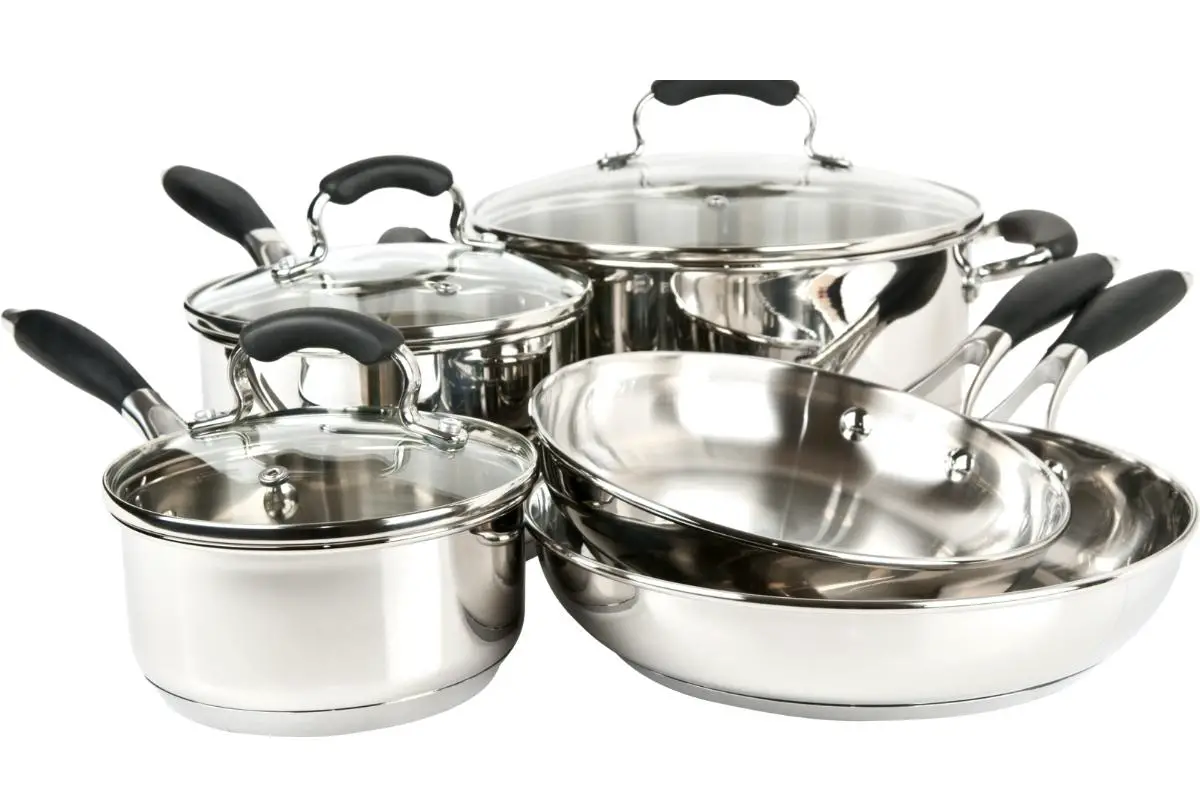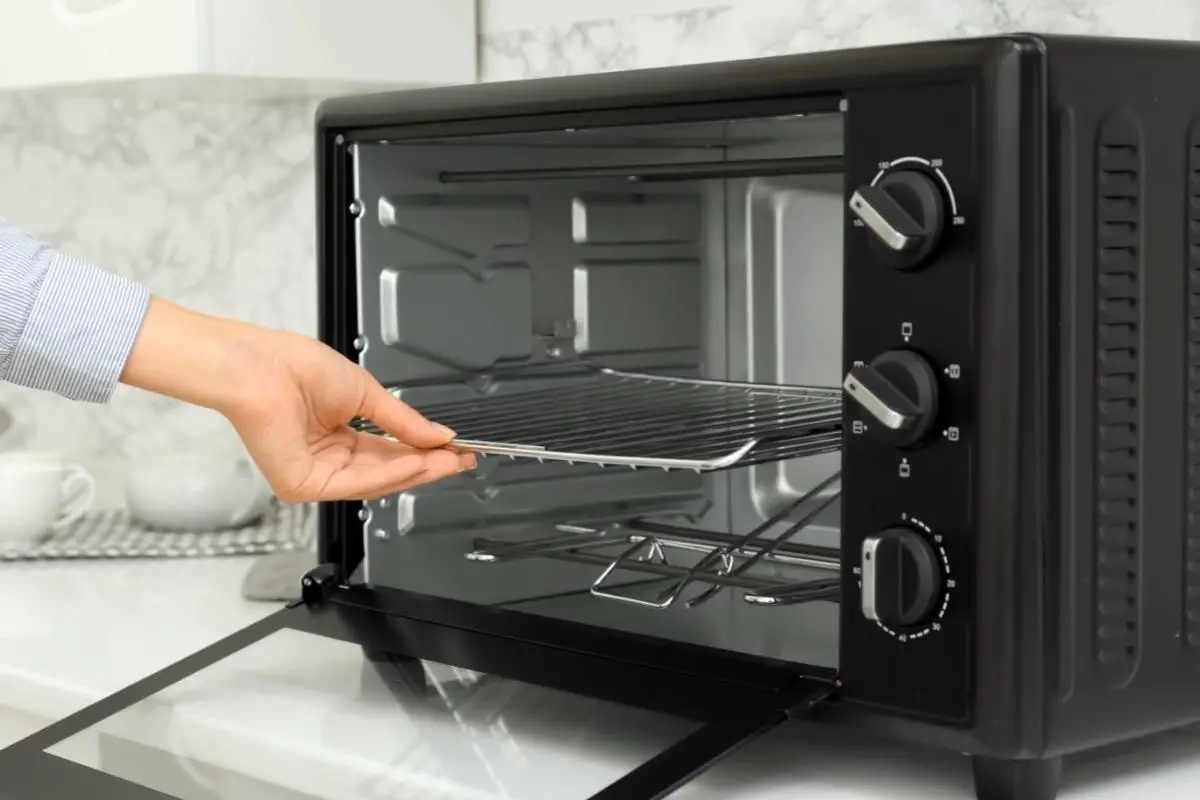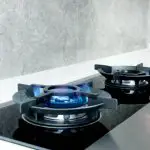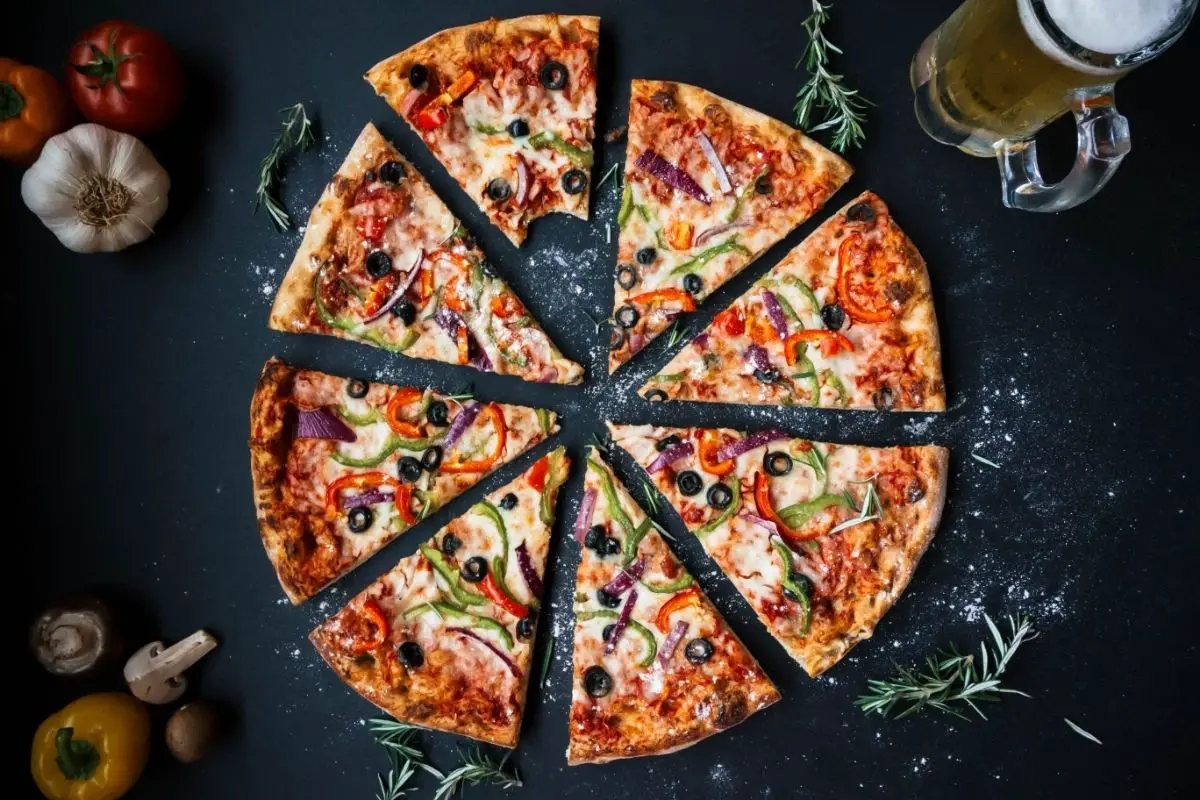Are you looking for new cookware? If yes, then you should consider buying hard-anodized cookware. This type of cookware has become very popular because of its durability and resistance to heat. But before you go out and buy one, you need to know whether these pots are safe.
Hard-anodized cookware is a type of nonstick cookware that uses aluminum oxide (Al2O3) coating instead of Teflon.
These types of pans are often preferred over other types of cookware because they don’t react with food and are resistant to stains. They also come in various sizes and shapes, allowing you to choose the pan that suits your cooking style.

While hard-anodized cookware is considered safer than regular cookware, there are still concerns to be aware of regarding their safety. Without further ado, let’s assess the safety of hard-anodized cookware once and for all.
What Does Hard Anodized Mean?
Hard-anodizing is an electrolytic process where the outer layer of aluminum material is oxidized, making it harder, more resistant to corrosion, and a better thermal insulator.
A hard-anodized pan, therefore, is better at retaining heat, more resistant to wear and tear, and less likely to rust. These are all excellent qualities in a piece of cookware.
Despite this, many people still wonder whether hard-anodized aluminum is a safe material to cook with.
The Safety Of Hard-Anodized Cookware
If you have been considering investing in some hard-anodized cookware, you will be relieved to hear that this type of cookware is generally considered very safe. Read on for a breakdown of the different things to consider when evaluating the safety of hard-anodized pans.
Reactivity
Aluminum that hasn’t been hard-anodized is a reactive material, but hard-anodized aluminum is not reactive.
This means that you can safely cook acidic food such as tomatoes in your hard-anodized pans without risking altering the flavor or color of your food through a chemical reaction.
Wear-Resistance
Part of the reason why hard-anodized cookware remains unreactive is that the hard-anodized layer is extremely wear-resistant, making it a strong barrier between your food and the raw aluminum inside the pan.
It is this wear-resistance that makes hard-anodized aluminum such a safe choice when it comes to cookware. Because the outer layer is so strong and difficult to damage, the internal aluminum is very unlikely to become exposed and contaminate your food.
Safety Risks Of Hard-Anodized Cookware

Despite being safer than many other cookware options on the market right now, there are still potential risks involved in using hard-anodized cookware.
Aluminum Leaching
One of the main concerns customers have about purchasing hard-anodized aluminum cookware is the potential for aluminum leaching. In other words, many customers are worried that the raw aluminum inside the pan will get through the anodized outer layer and contaminate their food.
As we explained earlier, the risk of aluminum getting into your cooking through the anodized layer is incredibly low. In fact, if the outer layer is intact, you can be completely certain that your food is safe from aluminum contamination, and since the anodized layer is very wear-resistant, exposing the raw aluminum underneath is actually quite difficult.
However, that doesn’t mean it’s impossible. Careless cleaning and storage can impact the longevity of the anodized coating on your hard-anodized cookware, leading to scratching. Once the surface is scratched, the pan is no longer safe to use because your food could be exposed to raw aluminum.
In case you were wondering why consuming traces of raw aluminum is dangerous, aluminum consumption has been linked to a couple of different health conditions, including:
Kidney Disease
Consuming very small amounts of aluminum (such as the amounts released by a compromised hard-anodized aluminum pan) would not cause kidney disease by itself. However, if you already have kidney disease, we would not recommend using anodized aluminum pans.
The reason for this is that if your kidneys are not functioning as they should, your body will not be able to get rid of trace amounts of aluminum the way it normally would. This allows aluminum to build up in your system, making each exposure much more dangerous. Therefore, it’s best to avoid hard-anodized aluminum cookware if you have been diagnosed with kidney disease.
Alzheimer’s Disease
It isn’t yet clear whether there is an actual connection between aluminum consumption and Alzheimer’s disease, but some studies have identified a correlation.
With that being said, correlation does not equal causation, and the Alzheimer’s Society has not backed up the claims that aluminum exposure causes Alzheimer’s because there isn’t enough evidence, especially since the studies in question were conducted on animals with a high susceptibility to aluminum toxicity. This has been confirmed by the World Health Organization.
Based on this information, is it not likely that cooking with a damaged hard-anodized pan would cause Alzheimer’s disease, although you should always avoid doing so regardless.
PTFE, PFBS And GenX
Some higher-end hard-anodized pans on the market are designed with nonstick coatings to make them easier to clean.
On one hand, this is a very useful feature. As we discussed above, it is important to keep your hard-anodized aluminum pans in good condition to prevent aluminum from leaching into your cooking.
We’ll go into more detail about how to keep your hard-anodized pans safe in a moment, but part of the maintenance process involves avoiding scrubbing the inside of the pan with abrasive materials. A non-stick surface can help to ensure this isn’t necessary because food remnants will be less likely to stick to the pan.
However, the problem with some non-stick cookware available at the moment is that it contains potentially dangerous chemicals.
PTFE, which is the chemical coating used to stop food from sticking to pans, used to be made with another chemical called PFOA. This chemical was found to cause numerous health issues, including kidney and testicular cancer as well as fetal development issues, so as of 2013, it is no longer used in the making of non-stick cookware.
With that being said, the chemicals that have replaced PFOA in the PTFE-coated pans currently being sold aren’t much better from a health perspective. PFBS and GenX are the main substitute chemicals now used in PTFE, and both have been linked to health concerns such as kidney and liver problems.
This doesn’t mean that you can’t use PTFE-coated pans in your kitchen because PTFE is a stable compound that doesn’t usually release harmful chemicals.
However, if you do own a hard-anodized pan with a non-stick PTFE coating, you should never heat it up to more than 464 degrees Fahrenheit because this could cause the material to emit dangerous fumes.
These fumes are toxic enough to cause a condition called polymer fume fever in humans, and they are especially dangerous to birds, so if you have a bird as a pet, this is another reason to be cautious.
If you want to avoid the risks involved in cooking with a PTFE non-stick coating, you can also find hard-anodized cookware that is non-stick but doesn’t use PTFE. Options include this cookware set from Cooksmart and this 8-piece set from Ninja.
How To Keep Hard-Anodized Cookware Safe

The information we have provided above all points to one conclusion: it is safe to cook with hard-anodized aluminum pans, and they are actually safer than many of the other options out there. However, the key to making sure that your cookware remains safe for use is maintenance.
To ensure that your hard-anodized cookware doesn’t get damaged, you should follow these steps:
- Wash your hard-anodized aluminum pans by hand. This is instead of putting them in the dishwasher. Letting a machine handle clean-up for you might be tempting, but it also increases the risk of your cookware sustaining damage. It’s best to do this even if the manufacturer has stated that the pan is dishwasher-safe.
- Don’t cut or chop anything in your anodized aluminum pan. Use a cutting board to slice your ingredients as needed before transferring them to the pan. This minimizes the risk of scratching the surface of the pan.
- Avoid abrasive sponges when cleaning your cookware. If you need to use a sponge, use a soft one that won’t scratch the cooking surface.
- Stick to mild detergent soaps and avoid detergents that contain harsh chemicals. This will help to maintain the integrity of your anodized surfaces.
- Use silicone or wood cooking utensils instead of metal ones. It’s much easier to scratch pans with metal forks, spoons, and spatulas, so make sure that you use the least abrasive tools possible.
- Don’t stack your pans. Stacking pans one on top of the other makes it more likely that one will get scratched, so try to keep your pans separate. If that’s not possible, get some liners to protect the inside surface of each pan.
- Don’t heat your hard-anodized pans above 500 degrees Fahrenheit. If your pan has a non-stick coating made from PTFE, you should not let it get hotter than 464 degrees.
- Never store your food in anodized aluminum pans. Not only does doing so increase the chances of food sticking inside the pan, but it also means that your food will be more likely to be contaminated with raw aluminum if your pan has some damage that you’re unaware of.
- If your hard-anodized aluminum pan has a PTFE coating, do not preheat. This will help you to keep the temperature below the 464-degree threshold, avoiding damage to the non-stick coating and preventing the release of toxic fumes. On this subject, while it won’t protect the structural integrity of your hard-anodized, PTFE-coated pan, you should make sure to use any extractor fans you have in your kitchen or at least open a window when cooking. In case any fumes do escape, this will reduce the amount that you breathe in.
Frequently Asked Questions
Is Hard-Anodized Aluminum Better Than Stainless Steel?
Hard-anodized aluminum is considered to be superior to stainless steel in terms of durability, strength, and resistance to corrosion. On the downside, it’s not as easy to work with.
For one thing, you have to make sure to look after hard-anodized aluminum pans properly to avoid food contamination. Of course, you should take good care of stainless steel pans, too, but stainless steel doesn’t pose the same contamination risk as damaged anodized aluminum.
Do Hard-Anodized Pans Last Longer?
Hard-anodized aluminum pans are considered to be some of the best, if not the best, on the cookware market when it comes to longevity and durability. As long as you use, clean, and store your hard-anodized pans properly, they should last for many years without sustaining damage.
However, with pans made from other materials, you can continue to use them even when they have sustained a bit of wear and tear.
For instance, a stainless steel pan can continue to be used if it has some scratches on the inside, whereas a hard-anodized pan should be thrown away if there is any chance that the raw aluminum might be exposed.
How Much Is Hard-Anodized Cookware?
One drawback to buying hard-anodized cookware is the fact that it can be very expensive. A single high-quality, hard-anodized aluminum pan can cost between $50 and $70 depending on the size (this is based on a 10-inch or 12-inch diameter).
However, if you want to buy a set of hard-anodized pans, you’ll need to be prepared to pay even more. While buying a set of hard-anodized pans is cost-effective because sets tend to be better value for money, the average set of these pans can cost anywhere between $150 and $400 depending on the number of pans, the manufacturer, and any additional features.
With that being said, the extra cost of hard-anodized cookware ensures high quality and durability. Instead of buying cheaper cookware that needs replacing more frequently, we recommend saving up to buy a set of hard-anodized aluminum pans for your kitchen.
Is Ceramic Or Hard-Anodized Cookware Healthier?
One of the hardest choices you may have to make when choosing new cookware is ceramic or hard-anodized cookware. These two materials are often in competition for the healthiest cookware.
Although hard-anodized aluminum is generally safe to cook with, there is always a very small risk of contamination if the surface has been compromised.
For most people, this isn’t something to get overly worried about because the tiny amounts of aluminum that would leach out of the pan wouldn’t be enough to make you unwell and probably wouldn’t be absorbed by the body very well in any case.
However, if you have additional health concerns, such as kidney disease, that make you more susceptible to aluminum toxicity, you might want to choose ceramic cookware instead since this completely eliminates the risk.
Final Thoughts
As you can see from our hard facts about hard-anodized pans, these pans are generally considered safe. While there are still risks associated with using them, these risks are minimal compared to those associated with regular cookware.
The main thing to bear in mind with hard-anodized cookware is that it becomes less safe with age and use since the oxidized layer may become worn away, revealing the raw aluminum.
This could allow small amounts of aluminum to leach into your food, although the chances of enough aluminum being transferred to the food and then absorbed by your body to cause significant health problems are very slim.
Nonetheless, regularly absorbing even trace amounts of aluminum is something that should be avoided, especially if you are a person with kidney disease. If you use hard-anodized cookware, you should make sure to take good care of it to minimize any damage to the surface. If you notice any damage, stop cooking with that pan and replace it.
To avoid having to replace your expensive hard-anodized cookware too regularly, you should follow the maintenance advice above.
- What goes good with fried shrimp for dinner? - November 17, 2022
- Best Heat Diffusers for a Gas Stove - November 16, 2022
- Can you boil potatoes too long for mashed potatoes? - November 15, 2022








